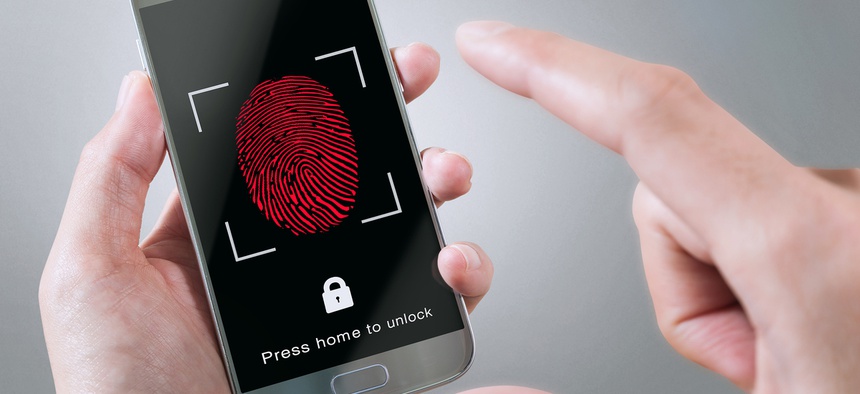PIN, Password, Facial Recognition, and other security features are available on smartphones to protect your device from unauthorised access. The fingerprint scanner is another form of electronic security system that uses biometric authentication to verify users’ identities.
allowing users to access their gadgets Fingerprint scanners are becoming a standard piece of security equipment.
Most mobile devices have this mechanism installed.
What are fingerprint scanners and how do they work?

We all know that everyone has a unique fingerprint, and this trait aids devices in identifying specific users. Manufacturers were able to include fingerprint scanners (or sensors) as an optional security feature for mobile devices as technology evolved. Fingerprint scanners have become a standard feature in most mobile devices, as users appreciate the security and convenience they provide.
These sensors capture a finger’s minute curves and edges, which are then processed and compared to a database of registered fingerprints using the device’s pattern analysis/matching software. Only when there is a successful match and the user’s identity has been validated is access to the device permitted.
The method of capturing data varies
depending on the type of sensor that has been used on the device. Now, let us discuss the
different types of fingerprint scanners and how they work
Smartphones come with a variety of fingerprint scanners
Optical Scanner: Optical scanners generate a photocopy of the finger in most cases. As the light-sensitive sensor registers the information to build a digital image, most scanners light up the finger to offer excellent line contrast. The majority of fingerprint scanners that are linked to the internet
Optical sensors are used in computers.


Capacitive Scanner: Capacitive scanners detect objects by using electricity rather than light.
Patterns of fingerprints As a finger rests on the touchcapacitive surface, the gadget monitors its charge. The sensor identifies which of the finger’s curves are presenting a pattern.
which ones produce a change in capacitance and which ones do not. All of this information is public.
The sensor then uses this information to properly map out fingerprints. The majority of cellphones make use of fingerprint scanners using capacitive sensors


Ultrasonic Scanner: Ultrasonic scanners work by using sound waves. It’s extremely similar to how bats and dolphins discover and identify items via echolocation. The device is meant to send out ultrasonic pulses and track how much of them bounce back. Your fingers’ curves and edges reflect sound differently, allowing ultrasonic scanners to construct a comprehensive 3D map of your fingerprint patterns. Qualcomm’s 3D ultrasonic in-display fingerprint sensor has been integrated into Samsung handsets.
:no_upscale()/cdn.vox-cdn.com/uploads/chorus_asset/file/22225984/3D_Sonic_Sensor_Gen_2.png)
:no_upscale()/cdn.vox-cdn.com/uploads/chorus_asset/file/22225984/3D_Sonic_Sensor_Gen_2.png)
Optical-capacitive fingerprint scanners: Ultrasonic fingerprint scanners aren’t the only way for manufacturers to hide the sensor in the display; optical-capacitive fingerprint scanners may also be employed. These scanners combine capacitive sensors’ “real touch” needs with optical scanners’ speed and energy economy. This technique is built into mobile devices by placing a sensor beneath the display that detects light reflected back through the pixels by a fingerprint.



